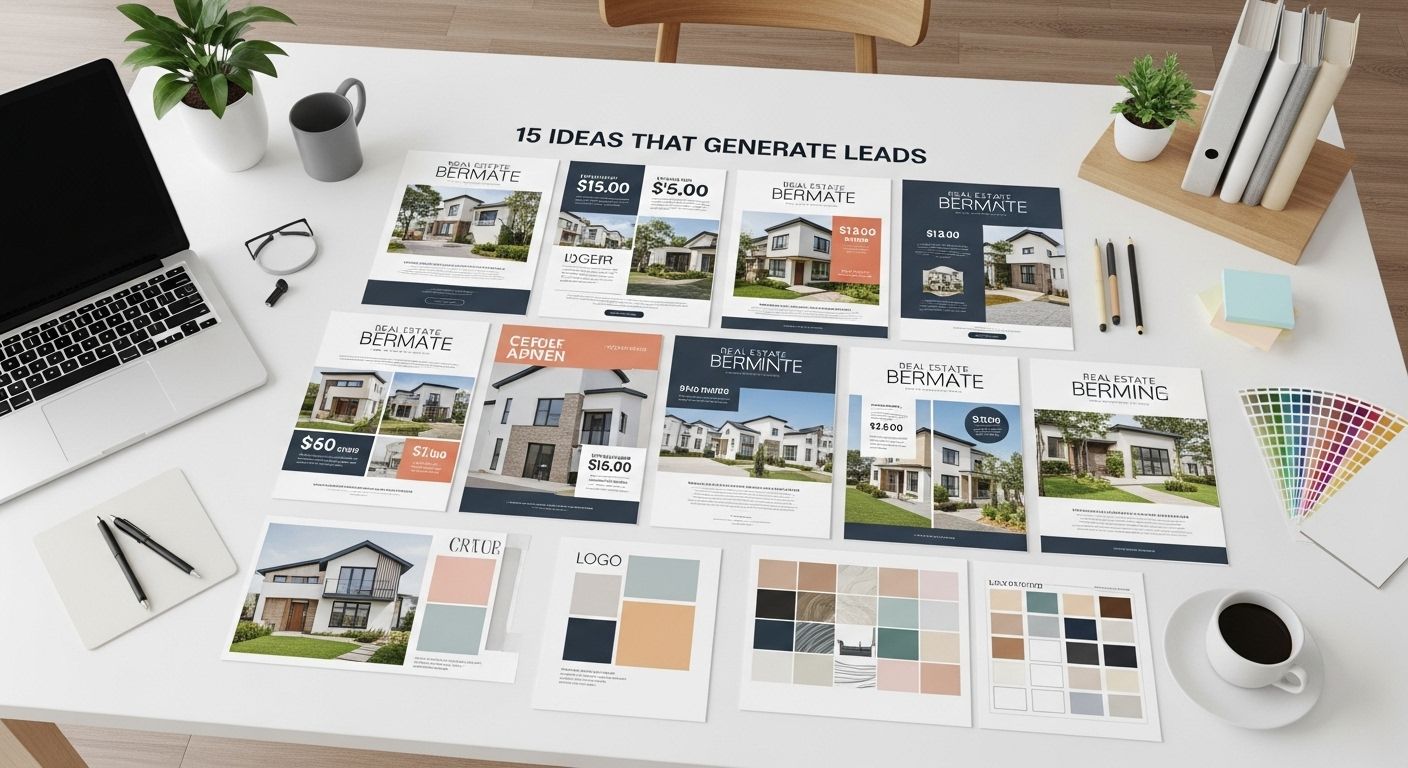How Immersive 3D Real Estate Experiences Transform Sales

Hey there, real estate professionals! You know that feeling when a client walks through a property listing online, spends maybe 30 seconds browsing photos, and then... silence? Yeah, we've all been there. Traditional property photos and floor plans just aren't cutting it anymore when it comes to capturing buyer attention and driving those all-important conversions.
Here's the thing though, technology has given us some pretty amazing tools to change this story completely. Immersive 3D real estate experiences are now transforming how properties get sold, and the results speak for themselves. We're talking about 74% of homebuyers being more likely to purchase after experiencing a VR tour, faster decision-making, and significantly higher engagement rates.
74% of homebuyers are more likely to purchase after a VR tour.
In this post, we'll break down exactly how these immersive experiences work their magic on your sales process. You'll discover the specific technologies that are making waves right now, learn practical ways to implement them without breaking your budget, and see real examples of how other real estate professionals are using these tools to close more deals. Plus, we'll show you how to measure success so you know your investment is paying off. Ready to give your property listings the kind of wow factor that actually converts? Let's get started!
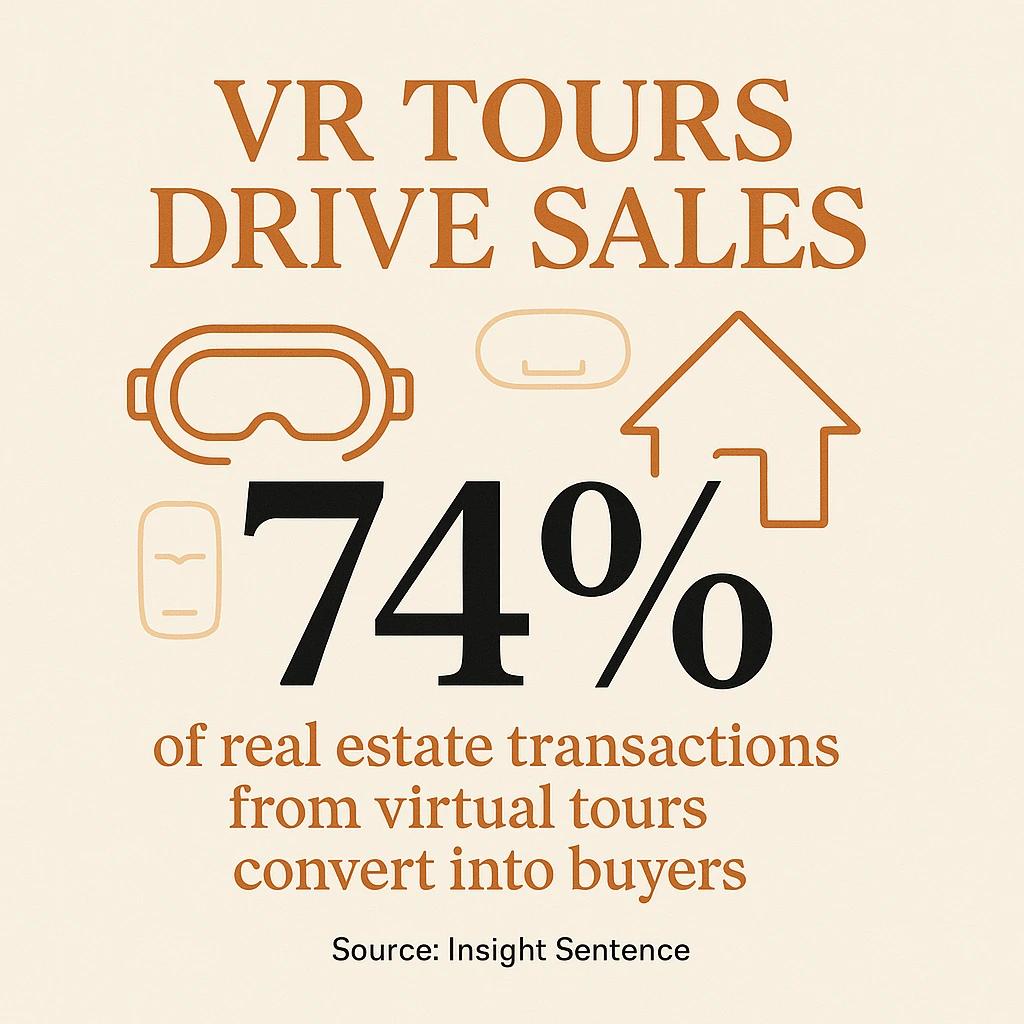
Understanding the Technology Behind Immersive Real Estate
Alright, let's talk tech without getting too into the weeds. When we say "immersive 3D real estate experiences," we're really talking about three main technologies working together: virtual reality (VR), augmented reality (AR), and advanced 3D rendering. Think of these as your digital toolkit for creating property experiences that feel almost as real as being there in person.
VR is probably what most people picture first. High-resolution 3D scanning and cloud-based platforms now enable detailed, interactive property environments accessible via VR headsets, smartphones, tablets, and web browsers. The cool part? Your clients don't necessarily need expensive equipment anymore. A smartphone and a basic VR headset can deliver surprisingly detailed virtual walkthroughs.
AR takes a different approach by overlaying digital information onto the real world. Picture a client pointing their phone at an empty room and instantly seeing how it would look fully furnished, or viewing property details and neighborhood data simply by looking at a building through their device. It's like giving your clients x-ray vision for real estate.
Then there's 3D rendering, which is where things get really exciting for developers and agents marketing properties that aren't even built yet. 3D rendering allows developers to market properties before construction, securing pre-sales and building buyer confidence through realistic visualizations. We've seen developers secure significant funding and pre-sales just by showcasing realistic 3D renderings of their planned projects.
VR Tours
- Best Use Case: Complete property walkthroughs
- Client Device Needed: Smartphone + basic VR headset
- Implementation Cost: Medium
AR Overlays
- Best Use Case: Furnishing visualization, property info
- Client Device Needed: Smartphone or tablet
- Implementation Cost: Low to Medium
3D Rendering
- Best Use Case: Pre-construction marketing
- Client Device Needed: Any web browser
- Implementation Cost: Medium to High
Interactive Floor Plans
- Best Use Case: Navigation and room details
- Client Device Needed: Any device with internet
- Implementation Cost: Low
Here's what makes this technology particularly powerful right now: artificial intelligence enhances VR tours with guided walkthroughs, highlights key features, and provides neighborhood data, making the experience more informative and personalized. Your virtual tours can actually adapt to what each client finds most interesting, highlighting features that matter most to them.
The accessibility factor is huge too. Even small agencies are now able to leverage these tools thanks to improvements in AI and smartphone capabilities. You don't need a massive tech budget to get started with basic 3D tours and AR features.
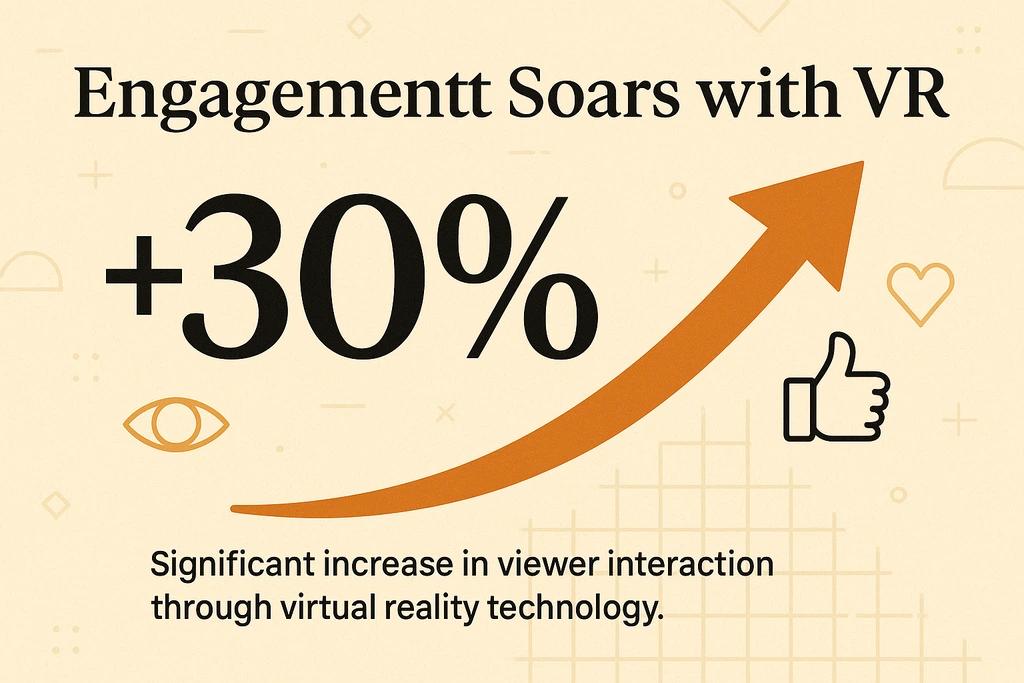
The Sales Impact: Real Numbers and Results
Okay, let's get to the good stuff. how exactly do these immersive experiences translate into better sales performance? The data we're seeing from real estate professionals using these tools is pretty compelling, and it goes beyond just "looking cool."
First up, engagement. Case studies show a 30% increase in viewer engagement when VR is used, and that translates directly to more serious inquiries. When someone spends 15 minutes exploring a virtual property tour instead of 30 seconds scrolling through photos, they're already mentally invested in that space.
VR boosts engagement by about 30% in case studies.
The conversion numbers are even better. We're seeing a 15% higher closing rate and over 80% of agents reporting increased confidence and efficiency with VR tools. That confidence boost makes sense when you think about it. agents can walk clients through properties remotely, answer questions in real-time during virtual tours, and help buyers visualize the potential of a space.
VR tools correlate with a 15% higher closing rate; 80%+ of agents report increased confidence.
Here's something interesting we've noticed: properties with immersive 3D experiences don't just sell faster, they also tend to attract more qualified buyers. When someone takes the time to experience a full VR tour, they've already done a lot of the preliminary screening themselves. They know the layout, they've seen the neighborhood context, and they have a realistic sense of the space.
Average viewing time
- Traditional Listings: 30-60 seconds
- With 3D/VR Tours: 8-15 minutes
- Improvement: Up to 30% increase in engagement
Qualified inquiries
- Traditional Listings: Baseline
- With 3D/VR Tours: Higher quality leads
- Improvement: Better pre-screening effect
Agent confidence
- Traditional Listings: Standard
- With 3D/VR Tours: Enhanced presentation tools
- Improvement: 80% report increased efficiency
Closing rates
- Traditional Listings: Baseline
- With 3D/VR Tours: Improved conversions
- Improvement: 15% higher closing rate
One of the most practical benefits is how these tools streamline the entire sales process. VR tours reduce the need for in-person showings and streamline the buying process. Clients can do their initial property exploration from anywhere, which means when they do schedule an in-person visit, they're much more likely to be serious buyers.
For developers specifically, the pre-sales advantages are substantial. Case studies show higher pre-leasing rates for properties marketed with VR. When you can show someone exactly what their future home will look like, complete with finishes and furnishings, before ground is even broken, that's a powerful sales tool.
The luxury market sees particularly strong results. High-end buyers expect detailed, polished presentations, and immersive 3D experiences deliver exactly that. Case studies show higher pre-leasing rates and faster decision-making in luxury properties using advanced visualization tools.
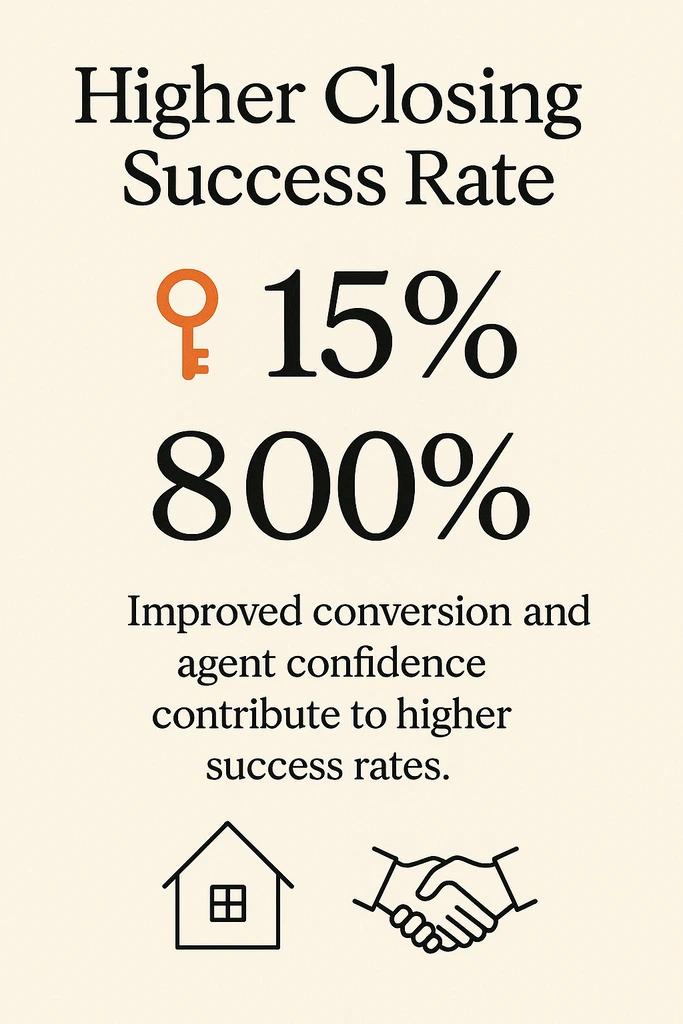
Implementation Strategies That Actually Work
So you're convinced that immersive 3D experiences can boost your sales, but where do you actually start? The good news is you don't need to dive into the deep end right away. There are plenty of ways to test these waters without a massive upfront investment.
Start with what you have. If you're already taking property photos, adding basic 3D scanning isn't a huge leap. Tools like Matterport or Ricoh360 can create immersive virtual tours using relatively affordable equipment. Many real estate photographers are already offering these services, so you might not even need new vendors.
For developers working on pre-construction sales, 3D rendering is often your best starting point. Integration of virtual staging, drone footage, and interactive floor plans creates a detailed marketing package that guides buyers from initial interest to final decision. This approach lets you create compelling visualizations of spaces that don't exist yet, which is particularly valuable for securing early commitments.
Here's a practical approach that works well for most real estate professionals:
- Start with interactive floor plans for all your listings (low cost, high impact)
- Add basic VR tours for your premium properties
- Experiment with AR features for staging and neighborhood information
- Scale up based on client response and ROI data
- Consider partnering with local tech providers for cost-effective solutions
Start smart: roll out interactive floor plans first, then add VR tours to premium listings.
The key is measuring what works. Digital transformation in real estate now requires tracking engagement metrics and conversion rates to optimize marketing strategies. Set up tracking for how long clients spend with your 3D content, which properties get the most virtual tour engagement, and most importantly, how these translate to actual sales.
Budget considerations are always important. The reality is that adoption of immersive technologies is becoming standard practice across the industry, which means costs are coming down while quality is going up. What cost tens of thousands of dollars just a few years ago can now be done for hundreds or low thousands.
Don't forget about the integration piece. Your 3D tours and AR experiences need to work smoothly with your existing website, MLS listings, and social media marketing. This is where working with a web development team familiar with real estate tech can save you a lot of headaches. Tools like our AmplyViewer platform are specifically designed to integrate seamlessly with real estate marketing workflows.
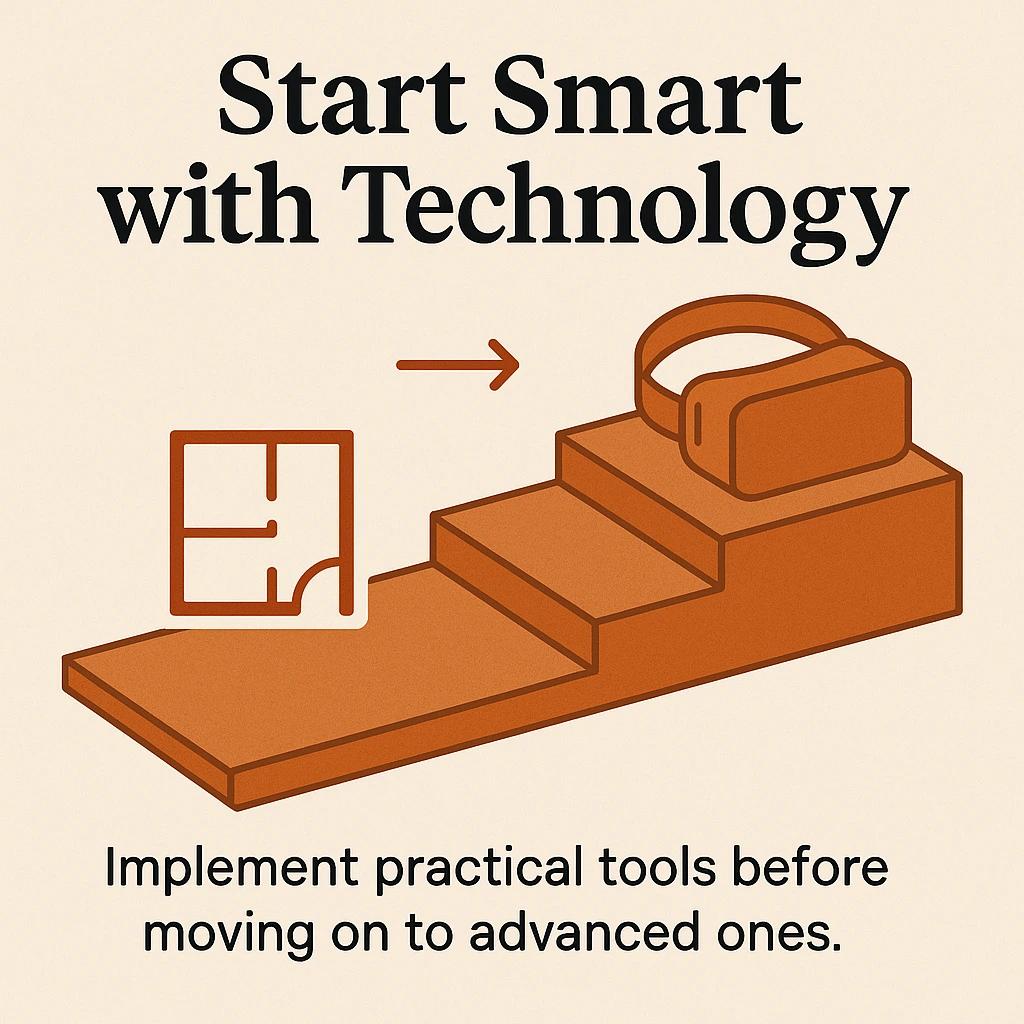
Measuring Success and ROI
Alright, so you've implemented some immersive 3D experiences for your properties. How do you know if they're actually working? This is where a lot of real estate professionals stumble. they invest in cool technology but don't set up proper tracking to measure its impact.
The metrics that matter most are engagement time, lead quality, and conversion rates. Successful real estate marketing now requires data-driven optimization of digital experiences to meet evolving buyer expectations. Start by tracking how long people spend interacting with your 3D content compared to traditional photo galleries. If someone spends 10 minutes exploring a virtual tour, that's a much more qualified lead than someone who glances at a few photos.
Here's a simple framework for tracking ROI on your immersive technology investments:
Engagement Time
- How to Track: Analytics on virtual tours
- Success Indicator: 5+ minutes average
- Business Impact: Higher quality leads
Virtual Tour Completion
- How to Track: Platform analytics
- Success Indicator: 70%+ completion rate
- Business Impact: Serious buyer interest
Inquiry Quality
- How to Track: Lead scoring system
- Success Indicator: More specific questions
- Business Impact: Better conversion potential
Time to Sale
- How to Track: CRM tracking
- Success Indicator: Faster decision timeline
- Business Impact: Improved cash flow
Cost per Lead
- How to Track: Marketing spend analysis
- Success Indicator: Lower cost vs traditional
- Business Impact: Better marketing efficiency
Lead quality is often more important than lead quantity. When someone has experienced a full VR tour of a property, their follow-up questions are typically much more specific and informed. They're asking about details rather than basics, which means they're further along in the decision-making process.
Don't forget to track the operational benefits too. Agents report increased confidence and efficiency when using VR tools for client presentations. This might show up as fewer unproductive showings, more focused client meetings, or simply less time spent on initial property explanations.
For developers, the metrics look slightly different. Pre-sales rates, time to funding, and buyer confidence indicators become more relevant. A developer used 3D renderings to market a high-rise condominium before construction, securing significant pre-sales and ensuring financial viability. In cases like this, ROI might be measured in terms of project funding secured or construction timeline acceleration.
Set up monthly reviews of your immersive experience performance. Look at which properties are getting the most 3D engagement, what types of virtual tours are leading to actual sales, and where clients are spending the most time during virtual walkthroughs. This data helps you refine your approach and invest in the specific types of immersive content that work best for your market.
The Future is Already Here
Look, we've covered a lot of ground here, but the bottom line is pretty straightforward: immersive 3D real estate experiences aren't just a nice-to-have anymore, they're becoming essential for staying competitive. Immersive technology adoption is now standard in competitive real estate markets, and the professionals who embrace these tools early are seeing real advantages in engagement, conversion rates, and overall sales performance.
Immersive technology is becoming a standard in competitive markets.
Your next steps don't have to be overwhelming. Start with one property, add a basic 3D tour, and track the results. See how clients respond, measure the engagement, and build from there. Whether you're working with existing properties or marketing developments that are still on the drawing board, there's an immersive solution that fits your budget and timeline.
The technology is accessible, the results are measurable, and your clients are already expecting these kinds of experiences. The question isn't whether immersive 3D will transform your sales process, it's how quickly you want to get started. Ready to give your property listings that competitive edge? Your clients (and your sales numbers) will thank you for it.
Want to see how we can help you implement immersive 3D experiences for your real estate projects? Check out our guide to choosing the best 3D rendering company or explore our luxury real estate marketing strategies for more ways to elevate your digital presence.



